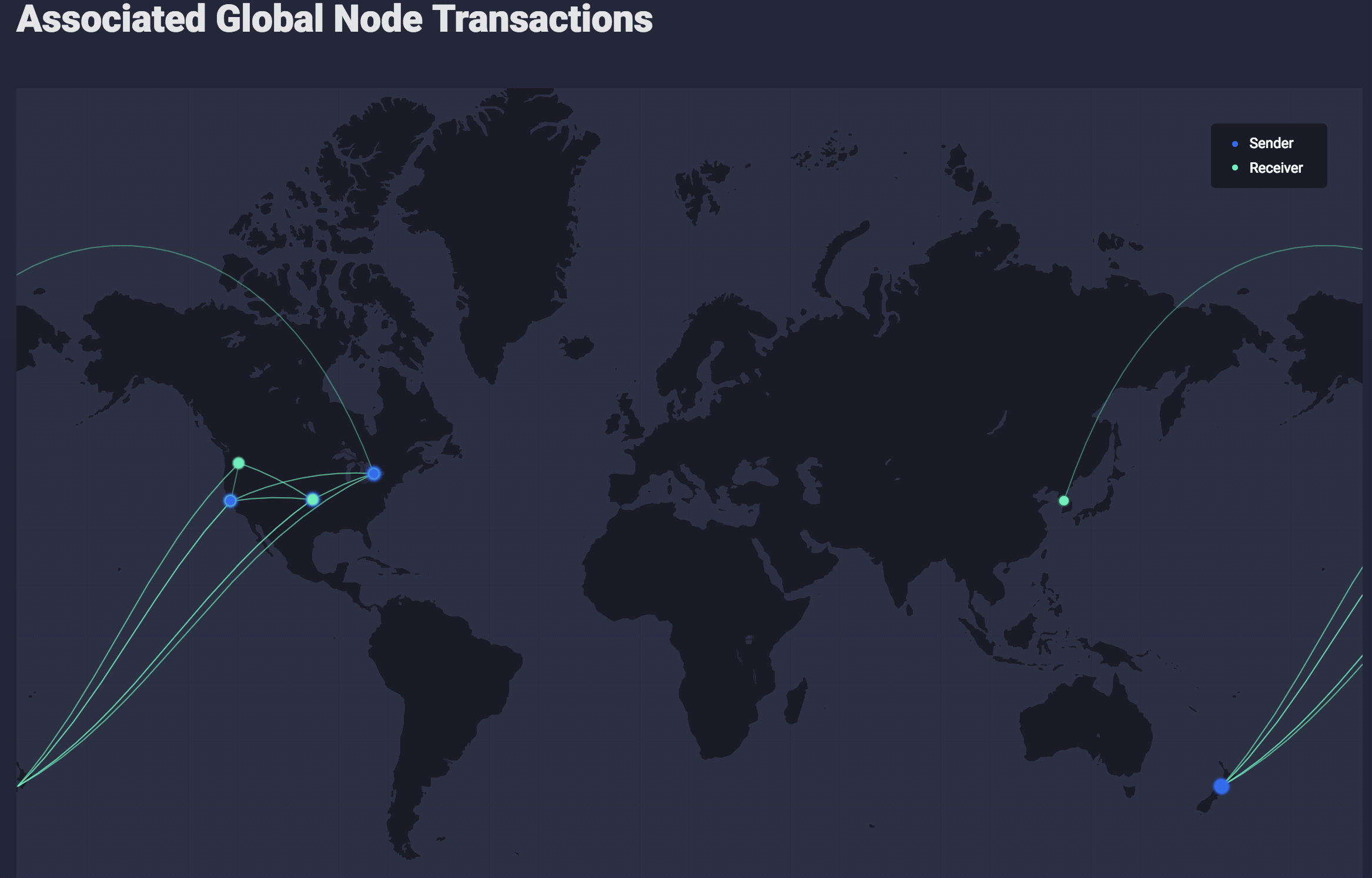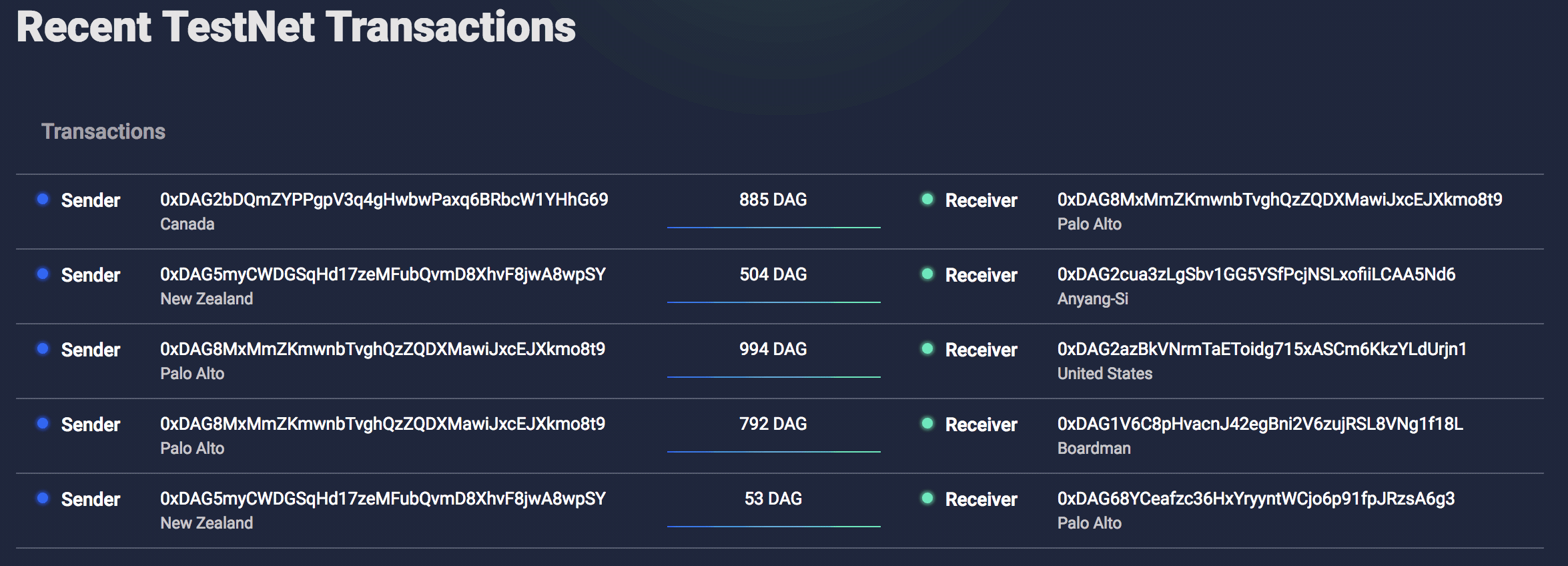Testnet Overview & Interview
Testnet Overview & Interview
https://constellationlabs.io/blog/index.php/testnet-overview-interview/
This week, we’re celebrating our August 1st Testnet launch with a written overview and interview on the subject, featuring Brendan Playford (CEO), Wyatt Meldman-Floch (CTO), and Ryle Goehausen (VP of Engineering).
Be sure to join the community on Telegram. Want even more from Constellation? Join our new Discord channel.
What is a Testnet?
While we’ve witnessed a fair amount of cryptocurrencies that have either sloppily thrown together their testnet, or simply forked an existing technology, at Constellation we’re taking a more refined approach to actually testing our own technology. In the words of our VP of Engineering, Ryle Goehausen:
“We’re not just going to throw together a demo and something that minimally works. What we’re interested in is verifying that our code is actually correct, and that means fleshing out and defining what it means for our chain to be working properly.”
What can a developer expect from the Constellation Testnet?
The first release of the Constellation testnet can be likened to a pre-alpha, open source software release that runs on a variable release cycle. This means that it contains incremental iterations of testable code that can be used by technically-advanced users only. In regards to the testnet launch, here’s what our CTO Wyatt Meldman-Floch had to say: “We’re officially releasing all of our code, and everybody can finally see what we’ve cooked up! Through the actual testnet program that we’re doing with Orion, people who are interested in staking some DAG can start hosting the initial nodes.”
Our v0.1 testnet release (codenamed Spider after the first manned Apollo 9 mission), will allow skilled developers to review the core codebase, submit issues and pull requests, and start evaluating the codebase for future releases. In addition, developers will have the opportunity to earn DAG rewards for merged pull requests, squashing bugs, and solving other issues that will benefit future iterations of Constellation. This will only be available to members of the Developer tier in the Orion portal, who can apply to become initial node operators.
(If you’re an interested developer or Constellation fanatic, be sure to check out our recently launched Discord channel, where lots of deep dive conversations are happening. In addition, our codebase is now live on Github, so check it out!)
Ryle had this to add around how developers will be encouraged to dive into the testnet, and how Constellation wants to foster community adoption:
“We’re going to have extensive documentation explaining how to do the most basic operations—sending transactions, starting a node, getting familiar with Constellation’s core development practices and life cycle. We really want to encourage and foster community adoption and ensure that developers can get their applications and code integrated from the very beginning with our APIs.”
You mentioned a visualization of the network. What do you mean by that?

Our network visualization is now live! Click here to witness our DAG transactions in action.
With this visualization, our goal is to break down a very abstract and technical concept with the idea of a DAG and make it simple to grasp. In the words of our CEO, Brendan Playford:
“I think this is really important from two aspects—one for the broader community, because it breaks down a very technical part of our architecture into something that’s easy to visualize and understand—and two, we want to prominently feature this notion of a block explorer for a DAG.”
What you’re looking at in the above graphic is essentially a visual demonstration of how the transactions were observed and how they were merged together with other transactions on Constellation. Another living example of DAG being sent and received can be seen below, which includes the corollary DAG wallet addresses and locations of the transacting parties.

Whereas other DAG companies don’t really show or explain how each piece of data is tied together, we wanted to demonstrate this visually because, in the words of Brendan, “once you see it, it makes sense intuitively as an understanding of why we’re trying to promote these sort of democratic principles of a network.”
Three Main Goals of the Testnet
Brendan breaks down the three main goals of the testnet as follows:
Social Proof – “With the launch of our testnet, we’re really excited to provide our community with social proof of what we’ve been talking about for some time. The community has been really enthusiastic and engaged with what we’re building, and this is our chance to reciprocate the trust our community has instilled in our vision.”
Engage The Community Visually – “Once you’ve seen our network visualized, it becomes a lot more intuitive to see how these things work—the flow of transactions, the kind of ordering and topology that comes out of these different environments, and to understand how our network sort of dynamically responds when we’re doing simulated attacks—so being able to actually see all that happen live is going to be really critical.”
Developer Engagement – “We really want to start off with a few core outside developers that can run a permissioned node and start giving us feedback and getting to know the core team. We want to build that developer community around us, and start to get people to build in parallel, understanding what the underlying data structure is and how our API’s work. While it may not all be there to start with, getting people early access to that and opening up to the community is vital for the success of the project.”
Lastly, why should developers be excited about the testnet and the eventual launch of the mainet?
One of the main reasons we feel that developers will be excited about working on Constellation is the simple fact that they should feel right at home, in terms of encountering familiar coding languages and programs that are typically missing in the Blockchain space.
Ryle echoed some of the positive sentiment from his developer peers who are thrilled to see Constellation building with tried and true tools: “I’ve told so many people who are in the Blockchain and Scala space [about Constellation] and they’re like “you’re using Akka and Cats and Algebird, this is exciting!” It’s really hard to encapsulate all that and find people working in these interesting libraries.”
Scala has become incredibly popular among functional programming and people trying to do higher-order mathematics and translate math research into actual code. Ryle also shared how one of the biggest selling points for developers is that “we’re utilizing Algebird and a lot of the libraries from Twitter and the MapReduce and SPARC and Scala community. I’ve worked with these libraries professionally in the past, and the opportunity to work on this in the crypto space is just very, very exciting.”
Wyatt went on to share his secret recipe for Blockchain success, which has been hiding in plain programming sight all along: “It’s pretty cool how the recipe to creating a clean code base and a legit blockchain was actually just functional programming principles.”
Ryle also shared his confusion around Ethereum’s intention to scale by integrating MapReduce, without actually utilizing any of MapReduce’s underlying frameworks. “It really surprises me how Ethereum has jumped all over this MapReduce train, yet Ethereum and others are trying to adopt techniques from MapReduce without actually using any of the languages, the libraries, the conventions or the common practices associated with MapReduce.”
While others are busy reinventing two things at the same time, we’re trying to reuse industry standard tools, libraries, and common conventions, making us much more appealing to mainstream developers.
To close this out, Wyatt had this message to share with the community:
“It really means more than the world that there’s a lot of people out there who believe in this dream. As we’re finally opening things up with our testnet, honestly the greatest gift that we can ask for is for people to try and get involved. The most exciting thing on my horizon is to see the kind of people who come out from the developer community and try to submit some legit code and try to build their own chains using Constellation. I’m just really excited to see you guys step on out into action – welcome to the team.”